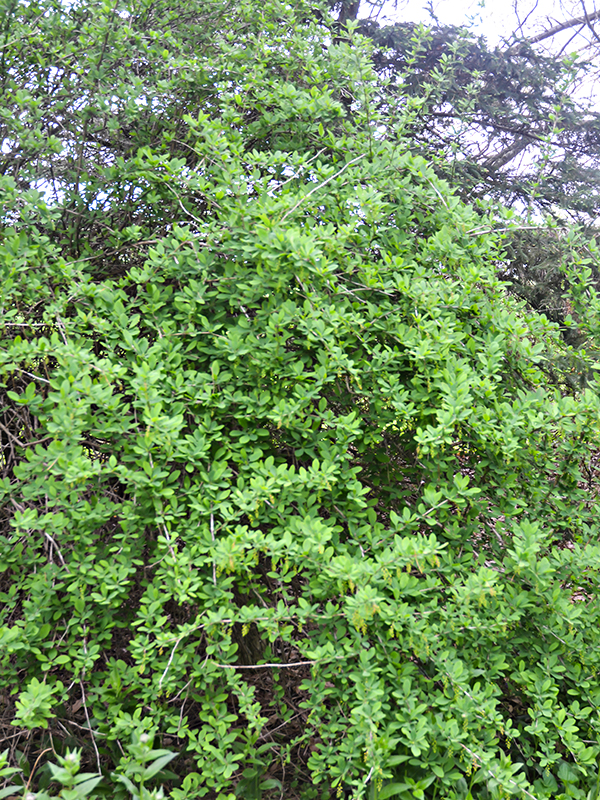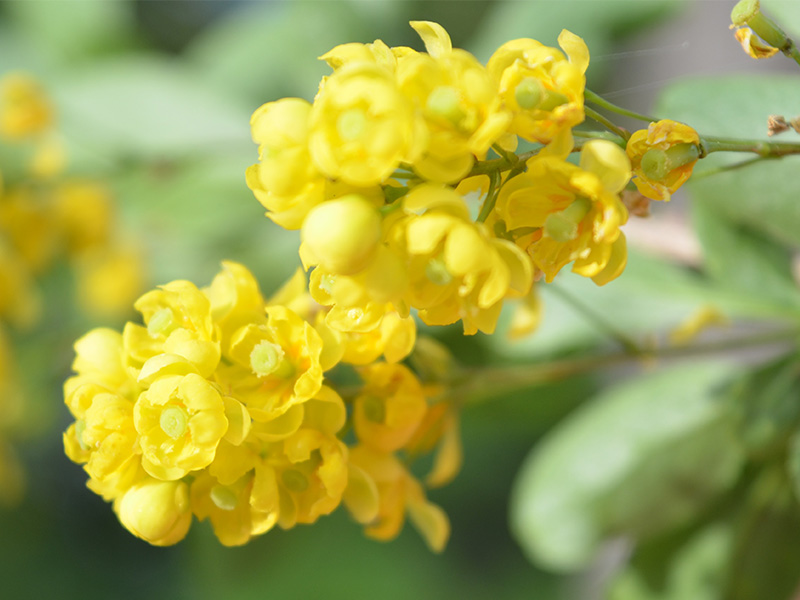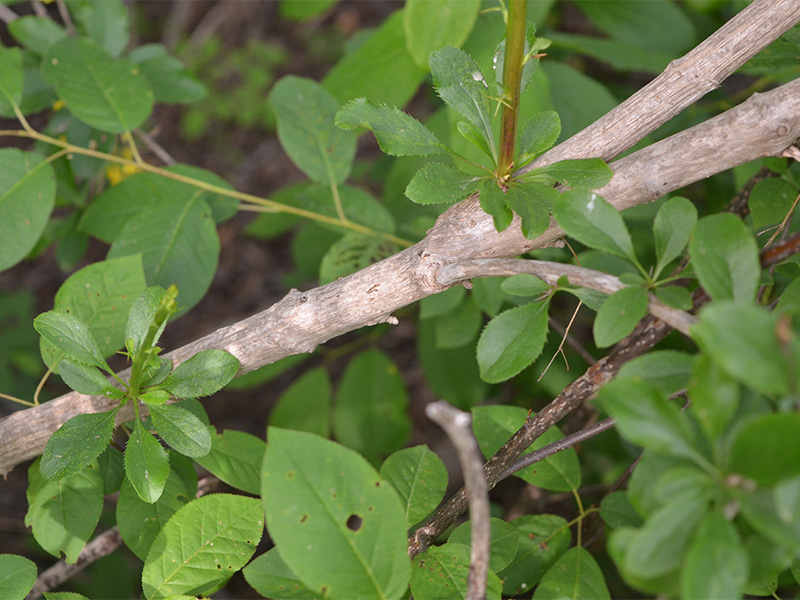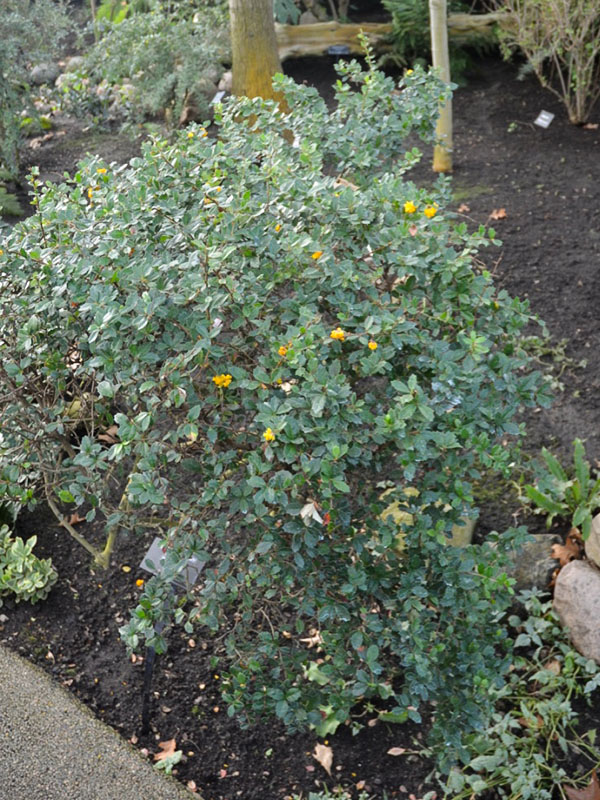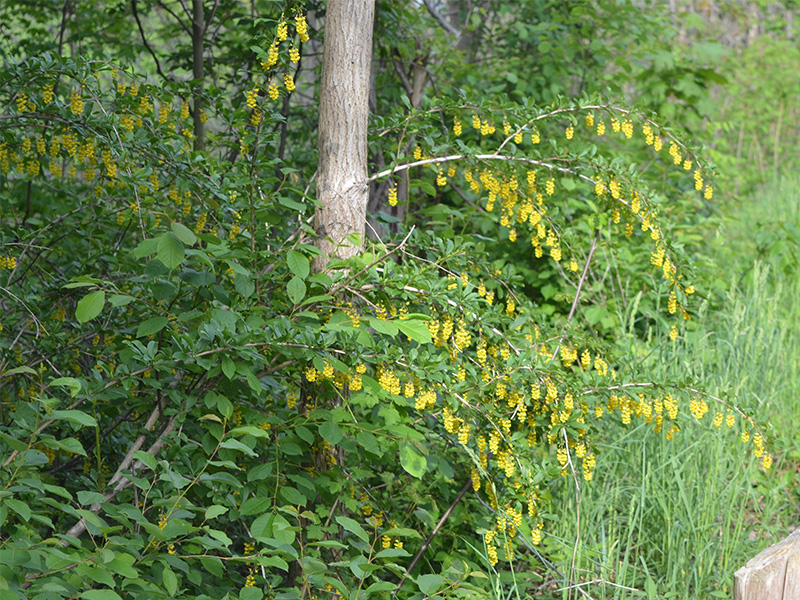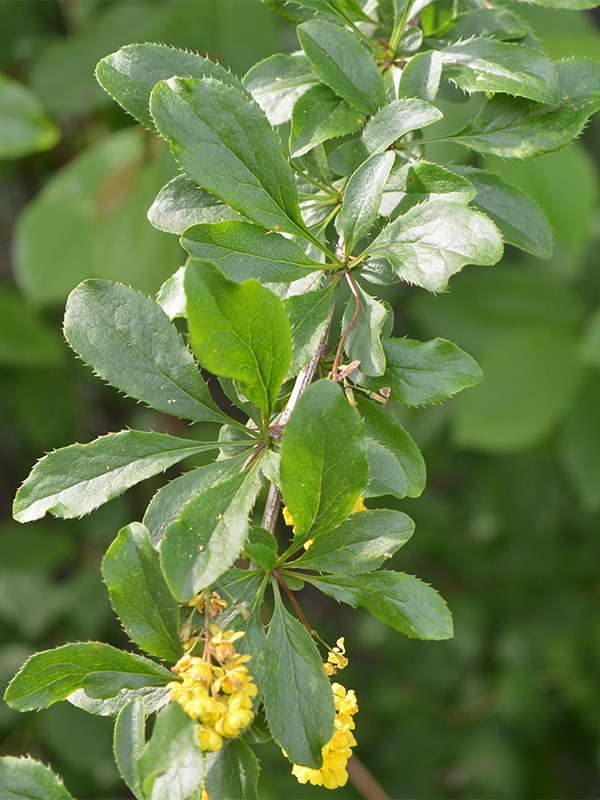
Woody > Berberis > Berberis vulgaris > Berberis vulgaris
Berberis vulgaris
Common Barberry
Origin: Native to central and southern Europe, northwest Africa and western Asia. Naturalized in many regions of North America.
| Family |
| Berberidaceae |
| Genus |
| Berberis |
| Species |
| vulgaris |
| Category |
| Woody |
| Type |
| Shrub (deciduous) |
| USDA Hardiness Zone |
| 3 - 7 |
| Canadian Hardiness Zone |
| 1a - 6a |
| RHS Hardiness Zone |
| H7 |
| Temperature (°C) |
| -40 - (-21) |
| Temperature (°F) |
| -40 - (-5) |
| Height |
| 3 m |
| Spread |
| 2 m |
Photographs
Description and Growing Information
Flowering Period
| Cultivation |
| Grow in full sun and in well-drained soil of any acidity. |
| Shape |
| Broad. |
| Pests |
| Pseudomonas berberidis (a bacterium) may cause small, purplish-black leaf spots, which may coalesce to cause yellowing and early leaf fall. |
| Bark/Stem Description |
| The stems are grooved, cambium is a distinct yellow colour. |
| Leaf Description |
| Small, oval, 2 - 5 cm long and 1 - 2 cm wide with serrated margin. Borne in clusters of 2 - 5. |
| Flower Description |
| The flowers are 4 - 6 mm wide and are produced on 3 - 6 cm long panicles in late spring. |
| Fruit Description |
| The fruit is oblong, 7 - 10 mm long and 3 - 5 mm wide, berry-like and ripen in late summer or autumn. |
| Colour Description |
| The leaves are green. The flowers and stems are yellow. The berries are red. |
| Propagation |
| Seed and hardwood cuttings. |
| Ethnobotanical Uses (Disclaimer) |
| The berries are edible but are sharply acidic and rich in Vitamin C. |
